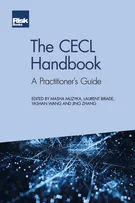Risk Governance: A Framework to Support Better Decision-making and a Journey Towards Continuous Improvement
Jérôme Berset
Introduction: Starting the Solvency II Journey
Solvency II: The journey so far
Internal Models and Solvency II
Review of the Capital Adequacy Framework in Singapore
Insurance Liabilities Under IFRS 4 Phase II and Solvency II: Almost the Same Thing?
Solvency II and Mutual Insurance Companies
The Journey Towards an Approved Internal Model
The Road to Solvency II for a Life Insurance Company
Managing Model Risk
Solvency II and Reinsurance
ORSA: A Forward-looking Approach to Risk and Capital Management
Risk Governance: A Framework to Support Better Decision-making and a Journey Towards Continuous Improvement
Operational Risk and Solvency II: A Practitioner Perspective
Reporting Processes
Reporting Challenges under Solvency II: The Allianz Experience
The Audit of Solvency II Information
The Holistic Balance Sheet: A Different European Approach for Pension Funds?
Capital for Operational Risk: Some Fundamental Flaws
Reputational Risk: Success is Trust-dependent
Regulation is often seen as a necessary as a necessary evil; with Solvency II, European authorities impose a major set of new risk management requirements, both quantitative and qualitative, on a large majority of (re)insurance companies. Moreover, many regulators throughout the rest of the world adopt equivalent requirements. Under the so-called “Pillar II”, the Solvency II framework (as well as similar frameworks) includes a very comprehensive set of riskgovernance requirements.
Considering the implementation of the risk governance requirements as a compliance exercise will not make the best use of the millions of euros invested. Looked at differently – as a mindset rather than a box-ticking exercise – your investment will improve the risk culture of your company and give it more resilience and agility. The key question is what are the specific considerations that will allow your company’s risk governance framework to be more than a bundle of policies and charters establishing risk and control processes? Which are the smarter solutions that offer greater benefits for your company?
This chapter will review the essential components of a solid risk governance framework, as well as
Copyright Infopro Digital Limited. All rights reserved.
You may share this content using our article tools. Printing this content is for the sole use of the Authorised User (named subscriber), as outlined in our terms and conditions - https://www.infopro-insight.com/terms-conditions/insight-subscriptions/
If you would like to purchase additional rights please email info@risk.net
Copyright Infopro Digital Limited. All rights reserved.
You may share this content using our article tools. Copying this content is for the sole use of the Authorised User (named subscriber), as outlined in our terms and conditions - https://www.infopro-insight.com/terms-conditions/insight-subscriptions/
If you would like to purchase additional rights please email info@risk.net





